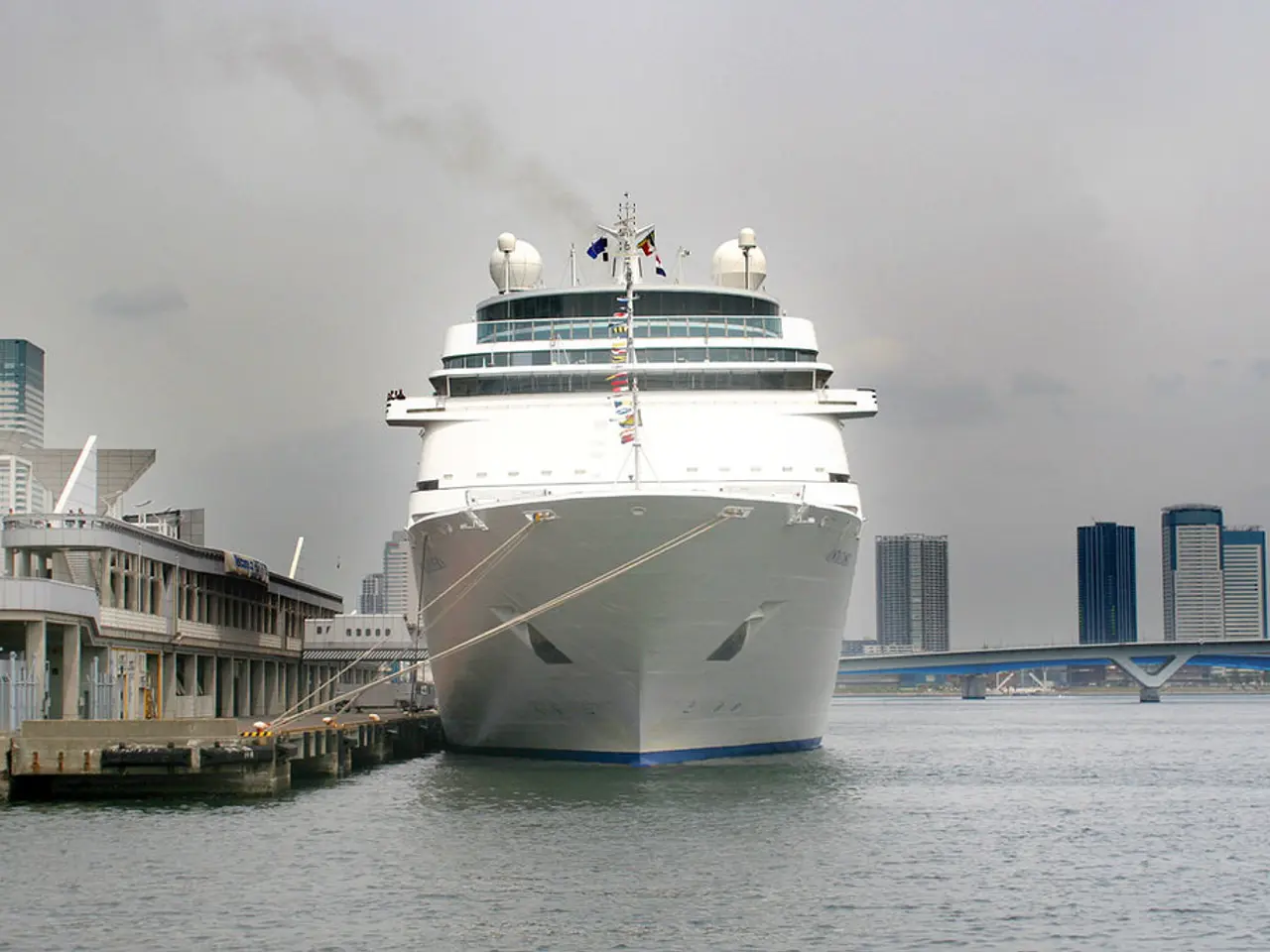Norway exploring floating nuclear power plants of 200-250 MW capacity to fuel industries and decrease emissions
In an exciting development, Norwegian energy and nuclear project developers have joined forces to explore a groundbreaking maritime solution. The collaboration between Bergen-based nuclear project developer Norsk Kjernekraft and Ocean-Power AS, a Ronglan company, aims to create nuclear platforms capable of delivering reliable, emission-free electricity.
The core of this innovative initiative involves the development of concepts for placing small modular reactors (SMRs) on barges. These flat-bottomed vessels without mechanical propulsion are intended for offshore and nearshore locations with high electricity demand, such as remote industrial hubs and offshore installations. Each floating power plant unit, with a capacity of 200-250 megawatts (MW), would supply electricity to nearby platforms in the offshore version or feed power into the grid for onshore use.
By choosing SMRs, the partners believe that they can open the door for a new way of producing clean energy. The collaboration's first step will be to assess concepts, technologies, and business models under Norwegian regulations, with a strong emphasis on tapping Nordic offshore and engineering expertise.
This is an important step towards a long-term nuclear power commitment in Norway involving the best of Norwegian industry, according to Jonny Hesthammer, CEO of Norsk Kjernekraft. Erling Ronglan, Ocean-Power CEO, stated that the partnership could mobilize the Nordic supplier industry to build solutions that can become world-leading.
Ronglan concluded that the initiative could become an important part of Norway's contribution to achieving climate goals while creating value for future generations. The partnership aims to create new sustainable energy solutions that require minimal land use, aligning with their goal of delivering stable, clean energy to industry and society while minimizing land use and maximizing flexibility.
Meanwhile, developments in floating nuclear power platforms (FNPPs) are accelerating globally. In the USA, Core Power, TerraPower, and Orano are working on a 300 MW molten chloride fast reactor on a demonstration floating vessel planned for launch in 2026, with commercial deployment targeted for 2030-2032. These reactors feature liquid fuel that allows operation at atmospheric pressure, cutting down on size and complexity.
Regulatory and feasibility studies are advancing as well. The American Bureau of Shipping (ABS), Core Power, and Athlos Energy are exploring FNPPs for the Mediterranean region to supply electricity and desalinated water to islands and ports. ABS published the first industry requirements for floating nuclear plants in 2024, supporting safe deployment.
The Maine Maritime Academy (MMA) is also actively developing FNPP-related maritime training and infrastructure, leveraging their tug and barge programs and local energy grid connections. This highlights the role of FNPPs in providing power to rugged coastlines and remote communities.
In summary, the global floating nuclear power sector is accelerating from early-stage concepts to demonstration projects with support from industry partnerships, regulatory development, and infrastructure planning. These platforms promise modular, transportable, low-carbon power generation with applications ranging from offshore energy supply to decarbonizing remote and maritime operations. The initiative in Norway could pave the way for exportable, barge-mounted nuclear solutions that deliver secure, low-carbon power, both in Norway and beyond.
[1] Copenhagen Atomics: https://copenhagenatomics.com/ [2] Core Power: https://corepower.com/ [3] Norsk Kjernekraft: https://www.norskkjernkraft.no/ [4] American Bureau of Shipping: https://www.abshipping.com/ [5] Maine Maritime Academy: https://www.mma.edu/
- The partnership between Norsk Kjernekraft and Ocean-Power AS, aiming to create nuclear platforms powered by small modular reactors (SMRs), represents a significant step in the use of innovation to harness technology for the development of clean energy in the Norwegian industry, based on their goal of delivering stable, clean energy to industry and society while minimizing land use and maximizing flexibility.
- The initiative could potentially mobilize the Nordic supplier industry to build world-leading solutions in the field of floating nuclear power platforms (FNPPs), aligning with the goal of creating new sustainable energy solutions that require minimal land use.
- The global floating nuclear power sector, with developments moving from early-stage concepts to demonstration projects, has the potential to deliver exportable, barge-mounted nuclear solutions that provide secure, low-carbon power, not only in Norway but also internationally, contributing significantly to climate goals and providing power to rugged coastlines and remote communities.




